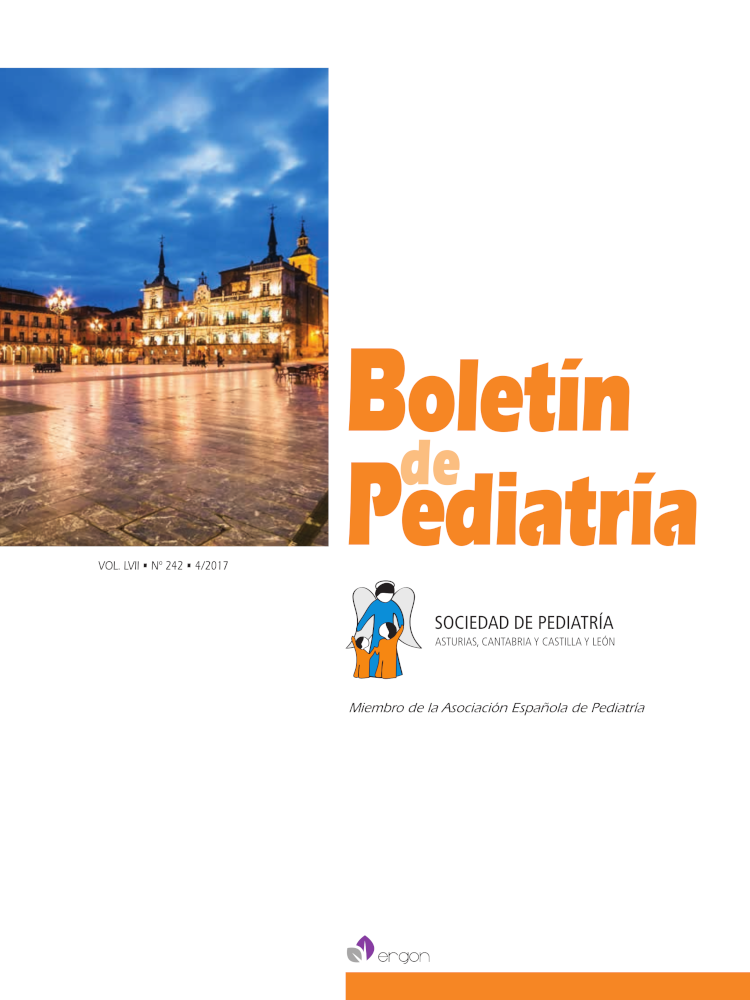Abstract
Introduction. Congenital Steinert’s disease is the most serious form of type 1 myotonic dystrophy, characterized mainly by muscle hypotonia and feeding difficulties. It is inherited autosomically dominant and presents the phenomenon of anticipation, being the major penetrance in successive generations and therefore, more serious forms. We present a case of a congenital form of Steinert’s disease in the affected family context. Clinical case. Pregnancy controlled with fetal diagnosis of Steinert’s disease (+ 110 CTG copies). Cesarean elective at 38 weeks. Apgar 3/7/8. The mother and sister of 2 years old have also Steinert’s disease. Exploration highlights hypotonia and generalized muscle weakness, with scarce movements and hypomimic facies; weak suction reflexion and osteotendinous hyporreflexia. It requires invasive mechanical ventilation for 21 days, later non-invasive night ventilation up to 3 months of life. It needs an orogastric tube for feeding during the first month, then progressively oral tolerance with good coordination, suction-swallowingbreathing and adequate ponderoestatural gain. Currently, with 6 months of life, she presents a delay in global neuromadurative development, persisting generalized hypotonia. In multidisciplinary follow-up by specialists, early care center and primary care pediatrician. Conclusions. The severity of the congenital form of Steinert’s disease requires follow-up by the primary care pediatrician and multidisciplinary team to detect possible omplications that can lead to even early death. Currently genetic counseling is essential for family planning and to prevent the transmission of the disease to successive generations. On the one hand, it is possible to carry out a genetic study of the embryos in a pre-implantation manner and then transfer them selectively without the mutation, by in vitro fertilization techniques. On the other hand, fetal genetic study by corial biopsy in the first trimester of pregnancy is also possible, as in the case presented, being able to voluntary interruption of pregnancy.

This work is licensed under a Creative Commons Attribution-NonCommercial 4.0 International License.
Copyright (c) 2017 Boletín de Pediatría
